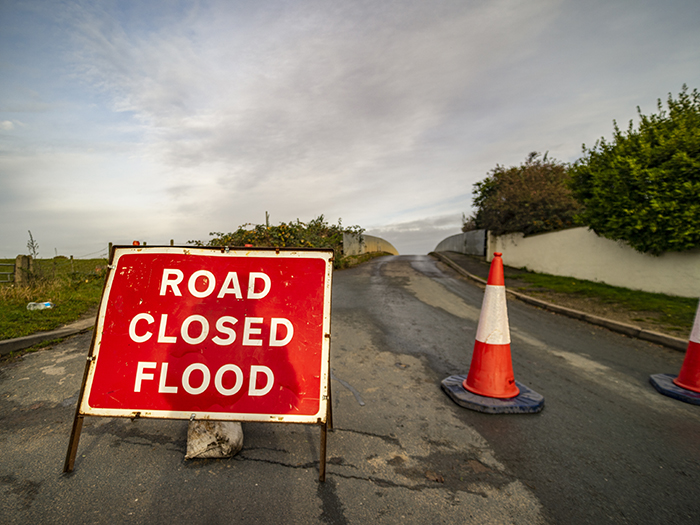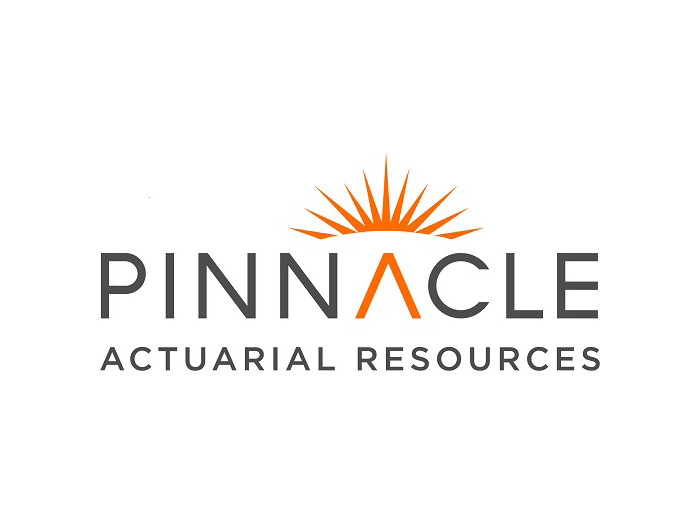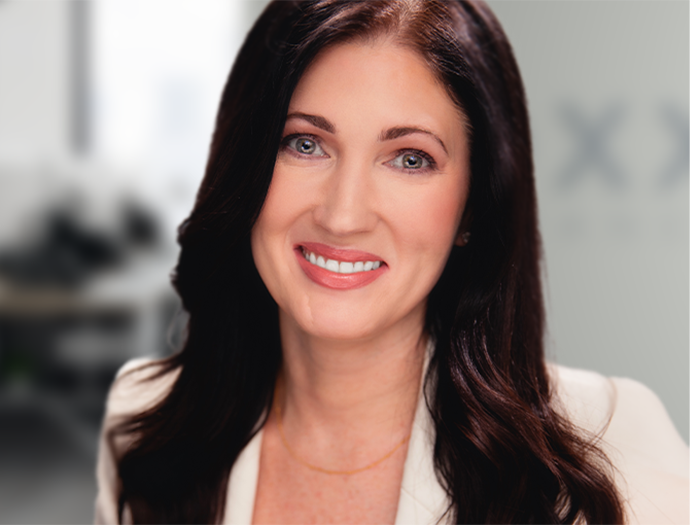Munich Re US’s Mike Quigley on the Power of Risk Perception in Insurance

Dan Reynolds, the editor-in-chief of Risk & Insurance, recently caught up with Mike Quigley, head of property underwriting and multiline risk quantification at Munich Reinsurance America, Inc. (“Munich Re US”). The conversation was prompted by the release of the RiskScan 2024 survey results, which Munich Re US oversaw and published in collaboration with the Insurance Information Institute. What follows is a transcript of that discussion, edited for length and clarity.
Risk & Insurance: Nice to speak with you Mike. For starters, what are the goals and motivations behind producing the risk scan survey?
Mike Quigley: The saying “perception is reality” holds true, making it critical to understand risk perception across the market. The survey, conducted in collaboration with the Triple-I, provides an unprecedented, broad perspective from various constituents in the insurance value chain, including, insurance buyers and sellers.
Understanding these perceptions and how respondents from the various segments view different threats or perils should foster productive discussions across the entire value chain. It may also help develop solutions to meet needs or close educational gaps. Perception of risk often involves behavioral and human issues, which this survey helps identify.
Insurance professionals may perceive risk differently than consumers or business professionals, even though they are exposed to the same risks. The survey creates an opportunity for dialogue around gaps, commonalities, and areas where we can raise awareness about specific risks.
R&I: How does the survey help Munich Re US align its resources and focus on key risks?
MQ: The survey highlights commonalities in perceived top risks across the value chain, such as inflation, cyber threats, and natural catastrophe risk. These insights confirm that we have focused our attention and resources in the right areas to meet the needs of our clients and their policyholders.
As a reinsurer, we often have a broader, global perspective on emerging risks before others who may be focused on individual risks or locations. Part of our role is to educate and share our view of risk, identifying emerging areas and helping the market understand them.
Cyber is a perfect example of where we have spent significant time over the last decade fostering market knowledge, from the original risk side to the insurance and reinsurance aspects of protecting balance sheets. The survey helps validate that our efforts and resources are appropriately allocated to assist our partners in navigating these key risks.
R&I: What were your key takeaways from the survey results? Did any findings surprise you or stand out as particularly interesting?

Mike Quigley, Head of Property Underwriting and Multiline Risk Quantification, Munich Reinsurance America, Inc. (“Munich Re US”)
MQ: My first takeaway is that there’s a lot of common ground and understanding of the core risk drivers, such as inflation, cyber and technological threats, and natural catastrophes. However, it’s interesting to see the nuances depending on one’s proximity to the risk.
For example, consumers perceive high-frequency non-peak perils like severe thunderstorms and flooding as more concerning than low-frequency events like earthquakes. In contrast, insurers and reinsurers view major earthquakes as potentially existential threats to their businesses if not properly managed.
It’s not shocking that proximity to risk and perception of risk frequency drive these differences in perspective. For middle-market businesses, topics like business interruption and technology-related disruptions rank higher, as staying open is crucial, and even small businesses are highly dependent on IT and payment systems.
What’s surprising is the level of underinsurance and the protection gap that still exists in areas like cyber, flood, and earthquake insurance. Despite the awareness of these risks, many individuals and businesses remain inadequately protected.
R&I: What role does perception of risk play in the insurance industry, and how does it relate to human misconceptions?
MQ: Perception of risk is a critical component in the insurance industry, and it ties into certain human misconceptions. For example, when it comes to flood risk, many people believe that if the situation is dire enough, the government or FEMA will bail them out without fully understanding the implications, such as loans that need to be repaid or the extent of economic impact on them as individuals. They may also incorrectly assume that flood events are covered under their traditional homeowner or business owner policies when they are not.
Education is a vital aspect of addressing the topic of risk perception. Agents have an opportunity to counsel their insureds on available products and share their perception of an individual’s risk, whether it be a homeowner or a business owner. Underwriters and insurance carriers can support this by providing more information and materials.
Industry organizations, such as the Institute for Business and Home Safety (IBHS), for which I serve on the board and executive committee, are working on behalf of the insurance industry to understand risk, promote better and smarter building practices, advocate for stronger building codes, and disseminate this information to insurance commissioners and consumers. The work done by engineers and scientists in these organizations needs to reach consumers more effectively.
Surveys like RiskScan 2024 that provide a cross-cutting view of the market can help drive attention to areas that need more focus when it comes to educating people about risk and risk perception. Little by little, progress is being made in this regard.
R&I: You mentioned “non-peak peril”. How do you define this term?
MQ: In the insurance and reinsurance industry, non-peak perils are often referred to as secondary perils. These events include floods, severe thunderstorms (often accompanied by tornadoes, strong winds, and hail), winter storms, and wildfires. Non-peak perils are typically frequent in nature but tend not to cause the same level of severe single-event losses as high-profile catastrophes like hurricanes or earthquakes.
We prefer the term “non-peak perils” because they are not necessarily defined by small to medium-sized disasters. Instead, these perils usually involve losses that accumulate over time. These can be localized floods, hailstorms, or other events that, when added up over the course of a year, can exceed the magnitude of a single hurricane that receives significant public attention.
R&I: Is inland flooding from hurricanes and severe storms the most concerning secondary or non-peak peril?
MQ: From a life safety perspective, flooding, particularly from storm surge and flash floods, remains the number one peril in terms of lost lives. Many people underestimate the risks, choosing to stay in their homes during events despite the potential for storm surges exceeding 20 feet.
Changes in climate, with warming sea surface temperatures in the Atlantic and Gulf of Mexico, is considered to be fueling the size and intensity of hurricanes coming onshore. These storms can travel further inland and stall, dropping significant amounts of water in a short period. Storm management systems are not built to handle such rapid water accumulation, leading to flash flooding.
Compounding impacts, such as pre-existing saturated soils from rainy weather, exacerbate the situation. The resulting damage to infrastructure and buildings is a testament to the destructive power of water, which many people cannot fathom until they experience it firsthand.
Flooding is a risk that has the potential to affect anyone in the country, regardless of their proximity to the coast. Perceptions of flood risk are often tied to FEMA flood zone designations, which are constantly changing and may not keep pace with the evolving risk landscape. Rapid development and changes in the built environment can significantly alter water runoff and storage, leading to increased flooding in areas that historically had not experienced such issues.
Underinsurance and the protection gap for flood risk remain significant challenges. Many homeowners forego flood insurance, either due to a misperception of the risk as it relates to them personally or a belief that federal assistance will bail them out. Educating consumers about the importance of flood coverage and the exclusions in standard homeowners’ policies is crucial.
The insurance industry is making progress in modeling and understanding the scope and magnitude of flood risk. Carriers are increasingly willing to take on some flood risk and provide affordable coverage options to complement the federal program. However, more work is needed to educate consumers and bridge the protection gap.
R&I: Are you optimistic about the growth of the private flood insurance market over the next few years?
MQ: I expect the private flood insurance market will continue to grow, although there has been a slowdown recently as insurance carriers and reinsurers assess their flood modeling after the significant flood-related losses from recent hurricanes. This is part of the natural evolution, similar to what we experienced with hurricane modeling after Hurricane Andrew.
As the models are refined, the market as a whole can discuss risk using a common language. We’re getting better at this for flood, but it hasn’t quite coalesced around a common platform yet, like it has for hurricane risk.
As our capabilities to effectively manage flood risk continue to evolve, I believe the appetite and willingness to take on more risk on the carrier side will grow. It’s similar to the evolution of cyber modeling and accumulation modeling, where precise definitions of events and coverage triggers are crucial.
The industry is putting resources into developing frameworks to assess and transfer these emerging risks from consumers to capital providers. Advancements in technology and computing power are helping us address these problem areas more quickly than we could 5 or 10 years ago. I expect this work to continue in the coming years across these known but still emerging risks in terms of our ability to effectively manage them.
R&I: How do you view generative AI as either an asset or a liability in the insurance industry?
MQ: Generative AI can be seen in both camps. At Munich Re US, we’re investing significantly in this space to enhance our view of risk. AI can synthesize vast amounts of information to assess risk at a scale that individuals cannot match, augmenting traditional underwriting and claims processes.
We have promising pilots highlighting key areas to focus on with insurance carrier clients, such as coverage concerns and risk interactions. AI could lead to more individualized coverage and pricing, as no two risks are identical. It may also improve response speed when consumers seek risk transfer products.
However, the industry must be cautious in deploying generative AI. Improperly trained AI or “hallucinations” could lead to issues in coverage or claims decisions. AI should augment human processes for better-informed, faster decisions. Consumers would appreciate technology that pays claims quicker in the event of a loss.
The insurance industry has always heavily invested in technology advancements. While there are potential risks, the industry is well-positioned to leverage generative AI to better serve consumers in identifying risks, pricing, and responding when needed.
R&I: What key insights or opportunities do you see emerging from surveys like this one that explore people’s perceptions of risk?
MQ: These types of surveys, which help us understand people’s perceptions of risk and viewpoints, open up opportunities for education and broader discussions beyond the typical insurance value chain. It’s important to consider how we can take what we learn and engage with other parties, such as those in the building trades, who are related to the insurance industry because they build and rebuild homes and businesses after events.
By working more closely with organizations and trades outside of the insurance value chain, we can improve the resiliency of the environment we live in, which benefits everyone. The goal is to avoid or minimize claims and prevent natural disasters from devastating communities, causing years of rebuilding that may never fully restore them to their pre-disaster state.
If we don’t take action on the risk mitigation side, we’ll continue to face conversations about carriers having to pull back due to the risk of being unable to remain solvent and meet consumer claims.
Leveraging the information we get from surveys like this to engage with different constituents is a significant opportunity to improve resiliency. &










